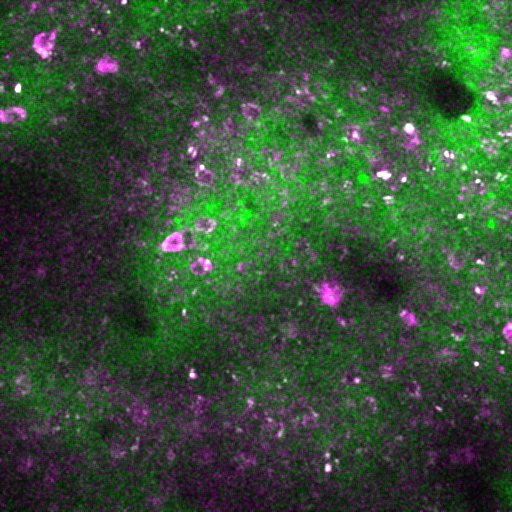pZac2.1 gfaABC1D-lck-GCaMP6f in Mouse (AAV5)
Addgene #52924-AAV5
- Data Submitted By
- Jillian Stobart
- Submission Date
- July 16, 2019
- Publication Date
- July 16, 2019 (modified May 16, 2023)
- Abstract
- Not Provided
Any further use of this image requires permission from the lab who submitted the data.
- Vectors Used
-
pZac2.1 gfaABC1D-lck-GCaMP6f
Addgene #52924-AAV5 - AAV9-hSyn-RCaMP1.07
Virus & Injection
Virus 1
- Virus Name
- pZac2.1 gfaABC1D-lck-GCaMP6f
- Serotype
- AAV5
- Source
- Addgene
- Catalog Number
- 52924-AAV5
- Promoter
- GFAP
- Cargo Type
- Biosensor
- Injection Titer / Dose
- 1.20E+13 GC/ml
- Injection Volume
- 300 nl
- Injection Rate
- 50 nl/min
- Injector Material
- Not Provided
- Injection Site / Route
- Somatosensory cortex, NeuroNames ID: 3241
Virus 2
- Virus Name
- AAV9-hSyn-RCaMP1.07
- Serotype
- AAV9
- Source
- Unknown
- Catalog Number
- N/A
- Promoter
- Synapsin
- Cargo Type
- Biosensor
- Injection Titer / Dose
- 2.40E+12 GC/ml
- Injection Volume
- 300 nl
- Injection Rate
- 50 nl/min
- Injector Material
- Not Provided
- Injection Site / Route
- Somatosensory cortex, NeuroNames ID: 3241
Other Details
- Species
- Mouse
- Strain or Cell Line
- C57/BL6J
- Source
- Not provided
- Age at Injection
- 8-12 weeks
- Time After Injection
- 3 weeks
- Detection Method
- Immunohistochemistry, Direct fluorescence
- Assay & Results
- The gfaABC1D-lck-GCaMP6f (AAV5) virus works really well. It spreads nicely after the injection and shows membrane labelling only in astrocytes. We have never detected expression in other cell types.
- Functional Testing
- The calcium sensor behaves as expected and nice microdomains are clearly visible.
- Other Information
- We have observed activated microglia and reactive astrocytes by immunohistochemistry when higher virus titers are injected. However, at this concentration, staining was normal.
